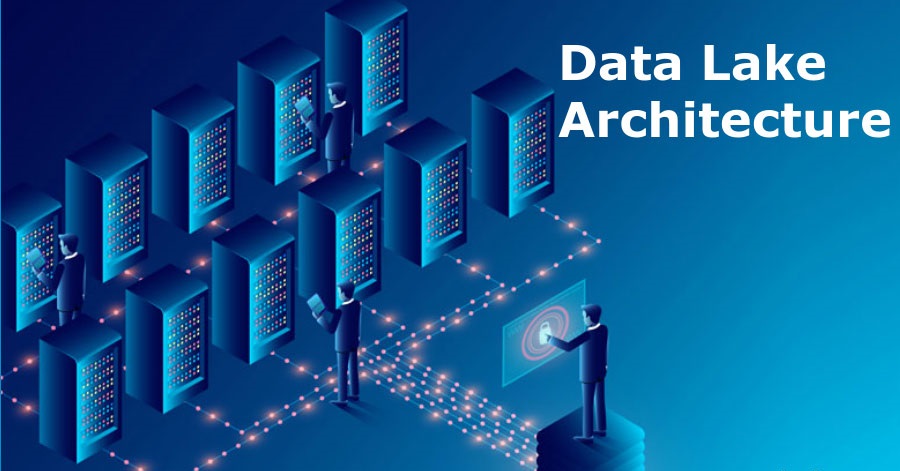The Role of Data Lakes in Advanced Data Science Architectures
 Shivanshi Singh
Shivanshi Singh
Introduction
In today’s data-driven world, organizations generate massive amounts of data from a variety of sources. This data needs to be efficiently stored, processed, and analyzed for valuable insights. Data lakes have emerged as a critical component in advanced data science architectures, providing a scalable and flexible solution to manage structured and unstructured data.
This article explores the role of data lakes in modern data science ecosystems and how they contribute to more effective data analysis.
What is a Data Lake?
A data lake is a centralized repository that allows organizations to store all their structured, semi-structured, and unstructured data at any scale. Unlike traditional databases, data lakes store raw data in its native format until it is needed for processing or analysis. This enables a flexible, cost-effective, and scalable solution for managing diverse data types, from text and images to logs and sensor data.
Key Features of Data Lakes
Scalability: Data lakes can store vast amounts of data, growing as needed without the constraints of traditional databases.
Flexibility: Data lakes support a wide range of data types and formats, including CSV, JSON, XML, and multimedia files.
Cost-Effective: Since data lakes store raw data, organizations can avoid the overhead of pre-processing, reducing costs associated with data transformation.
Data Agility: With all data stored in one place, data lakes provide quick access to data, fostering agility in analysis and reporting.
The Importance of Data Lakes in Data Science Architectures
1. Handling Big Data
In data science, the volume, velocity, and variety of data generated are ever-increasing. Data lakes are designed to handle big data efficiently by storing diverse data types, including raw, structured, and unstructured data. This ability to manage big data is essential for advanced data science processes like machine learning (ML) and artificial intelligence (AI).
2. Improving Data Accessibility
In traditional data warehousing environments, data must often go through significant transformations before being usable. Data lakes enable direct access to raw data in its original form, eliminating the need for cumbersome ETL (Extract, Transform, Load) processes. This significantly speeds up data preparation for data scientists, who can then spend more time on analysis and model building.
3. Supporting Machine Learning and AI
Machine learning models thrive on large datasets, especially unstructured data such as text, audio, and video. A data lake's ability to store massive amounts of raw data makes it an ideal environment for training these models. By feeding machine learning algorithms with vast data sets stored in data lakes, organizations can improve the accuracy and effectiveness of predictive models and AI systems.
4. Facilitating Data-Driven Innovation
Data lakes empower organizations to harness the power of all their data, including previously untapped unstructured or semi-structured data. By integrating diverse data sources, data lakes enable advanced data analytics, which can reveal hidden patterns, trends, and insights. This promotes a culture of innovation, where data scientists can experiment with new models and algorithms to unlock the full potential of data.
Data Lakes vs. Data Warehouses
Although data lakes and data warehouses are often discussed together, they serve different purposes within data architectures.
Data warehouses are optimized for querying structured data, which is pre-processed and stored in a highly organized format. They are ideal for business intelligence and reporting tasks where structured data is essential.
Data lakes, on the other hand, are designed to store raw data in its original format, making them ideal for use cases where unstructured data and flexible storage are key requirements. They support a broader range of advanced analytics, particularly in data science, where both structured and unstructured data are utilized.
Integrating Data Lakes with Modern Data Science Tools
In advanced data science architectures, data lakes are often integrated with modern analytics platforms and tools, such as:
Apache Hadoop and Spark for distributed data processing.
Data science workbenches like Jupyter Notebooks for exploratory analysis and model development.
ETL tools like Apache NiFi to move and transform data within data lakes.
Machine learning libraries such as TensorFlow and scikit-learn to leverage large-scale data for model training and deployment.
By connecting these tools to data lakes, data scientists can efficiently process and analyze data, develop models, and gain real-time insights that drive business decisions.
Challenges of Data Lakes
Despite their benefits, data lakes also present some challenges:
Data Governance: With vast amounts of raw data stored, ensuring data quality, consistency, and security can be difficult without proper governance practices.
Data Overload: Storing everything can lead to data swamps, where it becomes hard to distinguish valuable data from redundant or low-quality data.
Latency: While data lakes provide flexible storage, retrieving and processing unstructured data can lead to latency issues compared to pre-processed, structured data in data warehouses.
Conclusion
Data lakes play a pivotal role in advanced data science architectures by providing scalable, flexible, and cost-effective storage for both structured and unstructured data. As organizations continue to embrace data-driven strategies, data lakes offer a powerful solution for managing big data and fostering data science innovations.
For those interested in diving deeper into the potential of data lakes and exploring their applications across industries, enrolling in a data science training course in Noida, Delhi, Meerut, Chandigarh, Pune, and other cities located in India can provide a comprehensive understanding of this vital technology. When properly integrated with the right tools and governance, data lakes can transform raw data into valuable insights, driving better business outcomes.
Subscribe to my newsletter
Read articles from Shivanshi Singh directly inside your inbox. Subscribe to the newsletter, and don't miss out.
Written by

Shivanshi Singh
Shivanshi Singh
I am a Digital Marketer and Content Marketing Specialist, I enjoy technical and non-technical writing. I enjoy learning something new. My passion and urge is to gain new insights into lifestyle, Education, and technology.